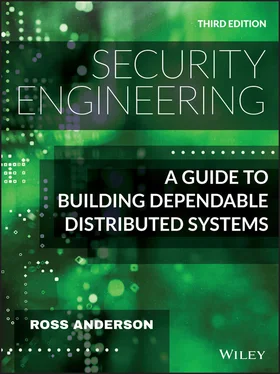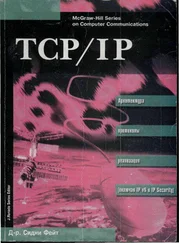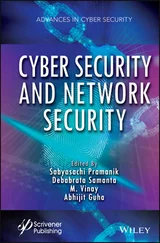As well as the access-control vulnerabilities, there are crypto issues, which I'll discuss in the chapter on Advanced Cryptographic Engineering.
The Arm is the processor core most commonly used in phones, tablets and IoT devices; billions have been used in mobile phones alone, with a high-end device having several dozen Arm cores of various sizes in its chipset. The original Arm (which stood for Acorn Risc Machine ) was the first commercial RISC design; it was released in 1985, just before MIPS. In 1991, Arm became a separate firm which, unlike Intel, does not own or operate any fabs: it licenses a range of processor cores, which chip designers include in their products. Early cores had a 32-bit datapath and contained fifteen registers, of which seven were shadowed by banked registers for system processes to cut the cost of switching context on interrupt. There are multiple supervisor modes, dealing with fast and normal interrupts, the system mode entered on reset, and various kinds of exception handling. The core initially contained no memory management, so Arm-based designs could have their hardware protection extensively customized; there are now variants with memory protection units (MPUs), and others with memory management units (MMUs) that handle virtual memory as well.
In 2011, Arm launched version 8, which supports 64-bit processing and enables multiple 32-bit operating systems to be virtualised. Hypervisor support added yet another supervisor mode. The cores come in all sizes, from large 64-bit superscalar processors with pipelines over a dozen stages deep, to tiny ones for cheap embedded devices.
TrustZone is a security extension that supports the ‘two worlds’ model mentioned above and was made available to mobile phone makers in 2004 [45]. Phones were the ‘killer app’ for enclaves as operators wanted to lock subsidised phones and regulators wanted to make the baseband software that controls the RF functions tamper-resistant [1241]. TrustZone supports an open world for a normal operating system and general-purpose applications, plus a closed enclave to handle sensitive operations such as cryptography and critical I/O (in a mobile phone, this can include the SIM card and the fingerprint reader). Whether the processor is in a secure or non-secure state is orthogonal to whether it's in user mode or a supervisor mode (though the interaction between secure mode and hypervisor mode can be nontrivial). The closed world hosts a single trusted execution environment (TEE) with separate stacks, a simplified operating system, and typically runs only trusted code signed by the OEM – although Samsung's Knox, which sets out to provide ‘home’ and ‘work’ environments on your mobile phone, allows regular rich apps to execute in the secure environment.
Although TrustZone was released in 2004, it was kept closed until 2015; OEMs used it to protect their own interests and didn't open it up to app developers, except occasionally under NDA. As with Intel SGX, there appears to be no way yet to deal with malicious enclave apps, which might come bundled as DRM with gaming apps or be mandated by authoritarian states; and, as with Intel SGX, enclave apps created with TrustZone can raise issues of transparency and control, which can spill over into auditability, privacy and much else. Again, company insiders mutter ‘wait and see’; no doubt we shall.
Arm's latest offering is CHERI 8which adds fine-grained capability support to Arm CPUs. At present, browsers such as Chrome put tabs in different processes, so that one webpage can't slow down the other tabs if its scripts run slowly. It would be great if each object in each web page could be sandboxed separately, but this isn't possible because of the large cost, in terms of CPU cycles, of each inter-process context switch. CHERI enables a process spawning a subthread to allocate it read and write accesses to specific ranges of memory, so that multiple sandboxes can run in the same process. This was announced as a product in 2018 and we expect to see first silicon in 2021. The long-term promise of this technology is that, if it were used thoroughly in operating systems such as Windows, Android or iOS, it would have prevented most of the zero-day exploits of recent years. Incorporating a new protection technology at scale costs real money, just like the switch from 32-bit to 64-bit CPUs, but it could save the cost of lots of patches.
Popular operating systems such as Android, Linux and Windows are very large and complex, with their features tested daily by billions of users under very diverse circumstances. Many bugs are found, some of which give rise to vulnerabilities, which have a typical lifecycle. After discovery, a bug is reported to a CERT or to the vendor; a patch is shipped; the patch is reverse-engineered, and an exploit may be produced; and people who did not apply the patch in time may find that their machines have been compromised. In a minority of cases, the vulnerability is exploited at once rather than reported – called a zero-day exploit as attacks happen from day zero of the vulnerability's known existence. The economics, and the ecology, of the vulnerability lifecycle are the subject of study by security economists; I'll discuss them in Part 3.
The traditional goal of an attacker was to get a normal account on the system and then become the system administrator, so they could take over the system completely. The first step might have involved guessing, or social-engineering, a password, and then using an operating-system bug to escalate from user to root [1131].
The user/root distinction became less important in the twenty-first century for two reasons. First, Windows PCs were the most common online devices (until 2017 when Android overtook them) so they were the most common attack targets; and as they ran many applications as administrator, an application that could be compromised typically gave administrator access. Second, attackers come in two basic types: targeted attackers, who want to spy on a specific individual and whose goal is typically to acquire access to that person's accounts; and scale attackers, whose goal is typically to compromise large numbers of PCs, which they can organise into a botnet. This, too, doesn't require administrator access. Even if your mail client does not run as administrator, it can still be used by a spammer who takes control.
However, botnet herders do prefer to install rootkits which, as their name suggests, run as root; they are also known as remote access trojans or RATs. The user/root distinction does still matter in business environments, where you do not want such a kit installed as an advanced persistent threat by a hostile intelligence agency, or by a corporate espionage firm, or by a crime gang doing reconnaissance to set you up for a large fraud.
A separate distinction is whether an exploit is wormable – whether it can be used to spread malware quickly online from one machine to another without human intervention. The Morris worm was the first large-scale case of this, and there have been many since. I mentioned Wannacry and NotPetya in chapter 2; these used a vulnerability developed by the NSA and then leaked to other state actors. Operating system vendors react quickly to wormable exploits, typically releasing out-of-sequence patches, because of the scale of the damage they can do. The most troublesome wormable exploits at the time of writing are variants of Mirai, a worm used to take over IoT devices that use known root passwords. This appeared in October 2016 to exploit CCTV cameras, and hundreds of versions have been produced since, adapted to take over different vulnerable devices and recruit them into botnets. Wormable exploits often use root access but don't have to; it is sufficient that the exploit be capable of automatic onward transmission 9. I will discuss the different types of malware in more detail in section 21.3.
Читать дальше











